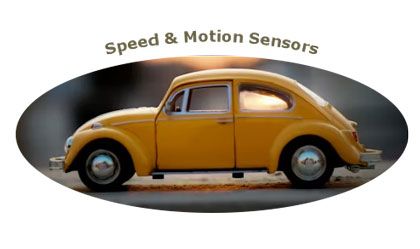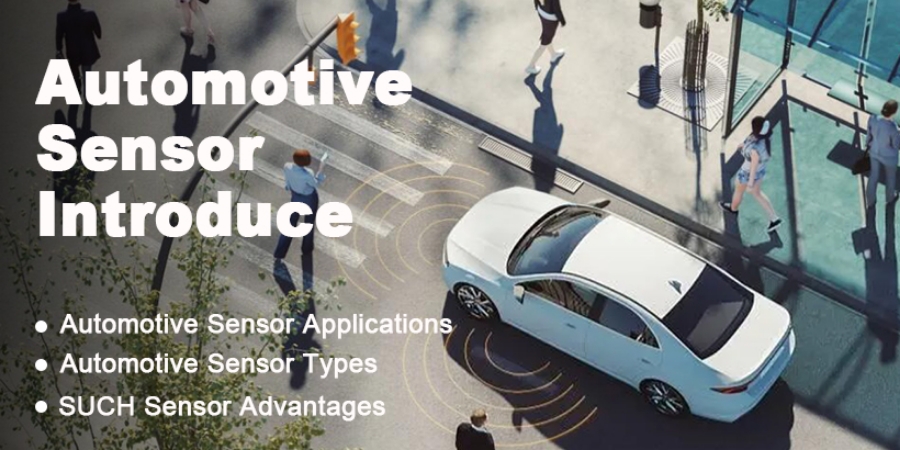
Automotive sensors are essential components in modern vehicles, responsible for detecting physical, chemical, or mechanical variables—such as position, speed, pressure, temperature, or gases—and converting them into signals that can be interpreted by the Electronic Control Unit (ECU). These signals enable real-time vehicle control, diagnostics, and safety optimization. This article explores the various types of automotive sensors, their practical applications, and the distinctive benefits of choosing SUCH sensor solutions.
Types of Automotive Sensors
Comprehensive Categories Supporting Full-Vehicle Smart Control and Safety
Car sensors are classified by function and system application, making it easier for OEMs, system integrators, and repair specialists to identify the right solutions.
Position Sensors
| Position sensors detect linear or rotational movements of mechanical components, providing vital feedback to systems controlling throttle, ignition, transmission, and valve timing. |
- Accelerator Pedal Position Sensor: Installed on the electronic accelerator pedal, this car sensor measures how far the pedal is pressed. It transmits signals to the engine control unit (ECU) to regulate fuel injection and throttle opening. Essential for electronic throttle control (ETC), it eliminates the need for mechanical throttle cables.
- Throttle Position Sensor (TPS): Mounted on the throttle body, TPS detects the angle of the throttle valve. This information is crucial for air-fuel mixture regulation, gear shifting in automatic transmissions, and reducing emissions under varying load conditions.
- Crankshaft Position Sensor: A critical timing sensor, it tracks the rotation and position of the crankshaft. By identifying top dead center (TDC) and engine speed (RPM), it ensures accurate ignition and fuel injection timing. Malfunctions can result in misfires or stalling.
- Camshaft Position Sensor: Works in conjunction with the crankshaft sensor to determine the exact position of the camshaft. Vital for sequential fuel injection and variable valve timing (VVT), it helps optimize power output and efficiency across different driving conditions.
- Steering Angle Sensor: Detects the steering wheel’s position and turning rate. Used in electric power steering (EPS), lane-keeping assist, and stability control systems, this sensor supports safe and responsive driving dynamics.
- Transmission Range Sensor (TRS): Monitors the gear lever position and ensures the correct gear is engaged. It's essential for automatic transmission logic and for preventing the engine from starting in the wrong gear.
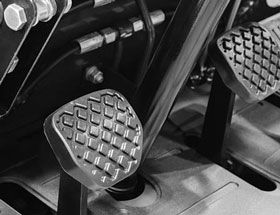 |
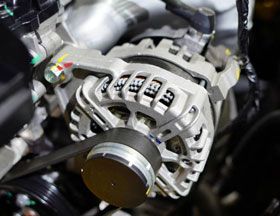 |
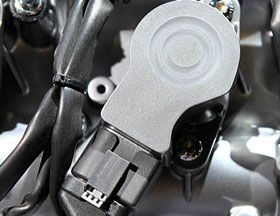 |
|
Accelerator Pedal Position Sensor |
Crankshaft Position Sensor |
Camshaft Position Sensor |
| Detects the travel of the accelerator pedal, enabling drive-by-wire throttle systems. | Monitors crankshaft angle and RPM to determine ignition and injection timing. | Works with variable valve timing (VVT) systems to optimize combustion. |
Temperature & Environmental Sensors
| Temperature sensors manage thermal loads across the engine, cabin, battery, and emissions systems. They prevent overheating and optimize performance under different environmental conditions. |
- Coolant Temperature Sensor: Installed in the engine block or radiator, it monitors coolant temperature to regulate fan operation, ignition timing, and fuel injection. A key component for preventing engine overheating.
- Intake Air Temperature Sensor (IAT): Measures the temperature of air entering the engine. Cooler air is denser and requires more fuel. The IAT sensor works with the mass airflow sensor (MAF) to maintain the correct air-fuel ratio.
- Battery Temperature Sensor: Especially important in electric and hybrid vehicles, this sensor tracks the temperature of the battery pack. It enables battery management systems (BMS) to balance charging, prevent overheating, and prolong battery life.
- Cabin CO₂/VOC Sensor: Used in HVAC and air purification systems, these sensors detect elevated levels of CO₂ (carbon dioxide) and VOCs (volatile organic compounds), enabling automatic air circulation or filtration to maintain healthy cabin air quality.
- Exhaust Gas Temperature Sensor (EGTS): Measures temperature in the exhaust stream, protecting turbochargers and diesel particulate filters (DPF) from excessive heat.

Pressure & Knock Sensors
| These pressure & knock sensors maintain combustion efficiency, detect abnormal pressure patterns, and improve emissions control. They are key to engine safety and fuel economy. |
- MAP Sensor (Manifold Absolute Pressure): Measures the absolute pressure inside the intake manifold. Together with IAT and engine speed, it helps calculate engine load, enabling precise fuel metering and ignition control.
- Fuel Rail Pressure Sensor: Monitors the pressure of fuel in the rail before injection. This ensures stable and consistent fuel delivery to the combustion chamber, preventing lean or rich mixtures and supporting start-stop systems.
- Knock Sensor: Detects the vibrations caused by engine knock (pre-detonation). It allows the ECU to retard ignition timing to avoid damage, especially in high-compression or turbocharged engines.
- Tire Pressure Monitoring Sensor (TPMS): Mounted inside each tire or valve stem, TPMS monitors inflation levels. If pressure drops below the safe threshold, it alerts the driver, reducing the risk of blowouts, tire wear, and poor fuel efficiency.
- Barometric Pressure Sensor (BAP): Compensates for atmospheric pressure variations due to altitude. Ensures consistent engine performance in both lowland and high-altitude driving conditions.
- Brake Pressure Sensor: Measures hydraulic brake pressure to support ABS (Anti-lock Braking System) and electronic stability control (ESC), allowing better control during sudden or emergency braking.
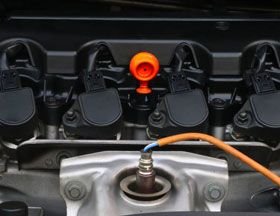 |
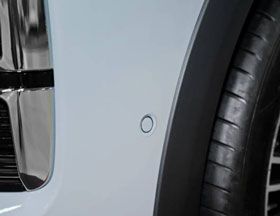 |
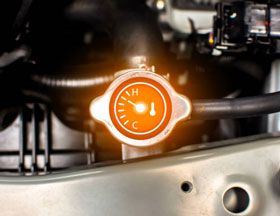 |
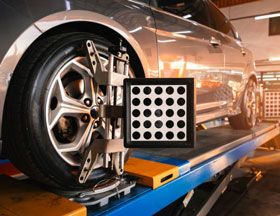 |
| Knock Sensor | Ultrasonic Parking Sensor | Coolant Temperature Sensor | Wheel Speed Sensor |
| Detects detonation, allowing ECU to adjust ignition timing and prevent damage. | Detects nearby objects during parking and reversing. | Controls radiator fan and injection timing based on coolant temperature. | Fundamental for ABS, ESC, and traction control. |
Speed & Motion Sensors
Enhancing Control, Safety, and Dynamic Response Across Vehicle Systems
| These speed sensors provide data to crucial safety and control systems, including ABS (Anti-lock Braking System), ESC (Electronic Stability Control), and various ADAS (Advanced Driver Assistance Systems). By monitoring motion, rotation, and orientation, these components ensure safe maneuvering, optimal traction, and responsive handling. |
- Wheel Speed Sensor: Installed at each wheel, this sensor detects rotational speed and direction. It’s the cornerstone of ABS, ESC, and traction control systems, allowing the ECU to prevent wheel lock during braking and optimize grip during acceleration or cornering.
- Yaw Rate Sensor / Inertial Measurement Unit (IMU): Measures angular velocity around the vehicle's vertical axis, helping determine if the car is skidding or oversteering. Yaw data is crucial for stability control systems and autonomous driving modules to maintain trajectory accuracy.
- Transmission Speed Sensor: Tracks the rotational speed of gears or input/output shafts inside the transmission. It ensures smooth gear shifts in automatic transmissions and helps optimize fuel efficiency and torque distribution in modern powertrains.
- Steering Angle Sensor: Captures the precise angle and rotation rate of the steering wheel. This sensor feeds data to lane-keeping systems, adaptive cruise control, and self-parking modules, enabling real-time steering corrections for safety and convenience.
- Vehicle Speed Sensor (VSS): Often mounted on the transmission or differential, this car sensor provides overall vehicle speed data to the ECU. It affects shift timing, fuel injection, cruise control, and digital speedometers.
Parking & Proximity Sensors
Precision Detection for Safe Low-Speed Maneuvers and Enhanced ADAS Awareness
| These parking sensors support driver awareness and system automation during low-speed operations such as parking, reversing, and lane changes. They are integral to ADAS packages, improving safety in tight spaces and dense traffic environments. |
- Ultrasonic Parking Sensor: Located in bumpers, these sensors emit sound waves to detect nearby obstacles. They are used in reverse assist and automatic parking systems, offering audible or visual feedback to prevent collisions at low speeds.
- Blind Spot Radar Sensor: Positioned on the sides or rear of the vehicle, these radar-based sensors monitor adjacent lanes. When a vehicle enters the blind spot zone, they alert the driver via visual or audible signals, significantly reducing side-swipe collision risks.
- Surround View Sensor Systems: These systems integrate multiple camera feeds and radar/lidar data to generate a 360-degree bird’s-eye view around the vehicle. They enable advanced functionalities like cross-traffic alert, pedestrian detection, and autonomous valet parking.
- Rear Cross-Traffic Alert Sensor: Uses radar or sonar to monitor cross-traffic when reversing out of parking spaces. Helps prevent accidents caused by unseen oncoming vehicles or pedestrians.
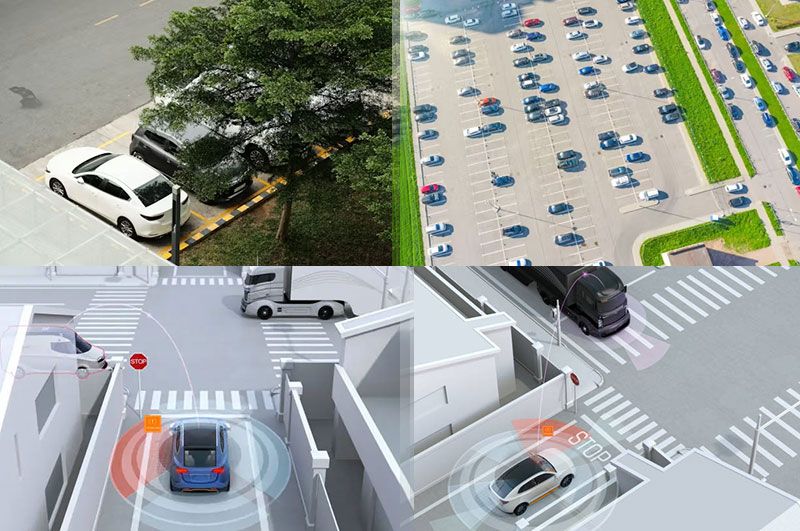
EV & Hybrid Vehicle Sensors
Smart Sensing for Electrified Powertrains, Battery Safety, and Energy Optimization
| As electric and hybrid vehicles (EV/HEV) become mainstream, specialized sensors ensure safe and efficient operation of high-voltage systems, battery packs, and regenerative braking. These sensors help meet rigorous safety standards and performance expectations. |
- High Voltage Insulation Monitoring Sensor: Continuously monitors the electrical insulation integrity between high-voltage components and the vehicle chassis. Essential for preventing short circuits and ensuring compliance with safety standards like ISO 6469 and UNECE R100.
- State of Charge (SOC) / State of Health (SOH) Monitoring Sensors: SOC sensors measure the battery’s remaining charge, while SOH sensors evaluate battery aging, capacity, and degradation. These readings are vital for accurate range prediction, energy management, and safe charging/discharging.
- Current and Voltage Sensors: Installed in battery packs and power electronics units, these sensors monitor bidirectional current and voltage flow. They enable load balancing, fault detection, and regenerative braking systems that capture braking energy to recharge the battery.
- Temperature Sensors for Liquid-Cooled Packs: Positioned within battery modules and along cooling plates, these sensors ensure optimal battery temperature under varying load and climate conditions. They enable thermal management systems to prevent overheating, increase battery life, and improve charge efficiency.
- Leak Detection Sensors: Monitor for coolant leakage within liquid-cooled battery enclosures. Essential for ensuring battery safety and preventing electrical shorts caused by fluid exposure.
- Isolation Fault Detection Sensor: A critical component in EV safety architecture, this sensor identifies any loss of isolation between the high-voltage system and the chassis ground, protecting passengers and hardware.
Key Automotive Sensor Applications
| Application | Function | Key sensors |
| Engine Management System | Sensors are vital in regulating ignition, fuel delivery, and air intake, allowing for efficient and clean combustion. |
Crankshaft Sensor, Camshaft Sensor, TPS, MAP Sensor, Knock Sensor, Coolant Temp Sensor |
| Brake & Stability Control | ABS, ESC, and traction control systems rely on speed and motion sensors to provide real-time input for safe vehicle behavior. | Wheel Speed Sensor, Yaw Rate Sensor, Steering Angle Sensor, Brake Pressure Sensor |
| Advanced Driver Assistance Systems (ADAS) | Modern driver assistance features like automatic parking, collision avoidance, and blind spot detection require multi-sensor integration. | Ultrasonic Parking Sensor, Wheel Speed Sensor, Blind Spot Radar, IMU |
| Thermal & Emission Control | For combustion engines and hybrids, temperature and pressure sensors help manage EGR systems, catalytic converters, and cooling functions. | Coolant Temp Sensor, Intake Temp Sensor, Oxygen Sensor, EGR Pressure Sensor |
| Electric Powertrain Monitoring | In EVs, sensors play a central role in battery health, charge control, and energy efficiency optimization. | Battery Temp Sensor, Insulation Monitoring Sensor, Current/Voltage Sensor, Motor Speed Sensor |
| Tire Safety & Monitoring | TPMS systems use pressure sensors to detect low pressure or rapid leaks, improving safety at highway speeds. | Tire Pressure Sensor, Wheel Speed Sensor (for indirect TPMS) |
Why Choose SUCH Automotive Sensors

At SUCH, we specialize in designing and manufacturing high-performance automotive sensors that empower intelligent mobility, safety, and energy efficiency. Our extensive sensor portfolio covers key systems—from engine management to tire safety—delivering reliable data to support next-generation vehicle control. Here’s what sets SUCH sensors apart:
- Precision Engineering for Critical Systems: SUCH sensors such as the Crankshaft Position Sensor and Camshaft Position Sensor offer high-resolution, real-time data crucial for ignition timing, valve control, and fuel efficiency. Designed for compatibility with advanced engine management systems, they ensure smooth starts, accurate combustion, and emission compliance.
- Safety First with Motion and Brake Sensors: Our Wheel Speed Sensors, Steering Angle Sensors, and Yaw Rate IMUs are key enablers of ABS, ESC, and ADAS features. With fast response times and rugged design, these sensors enhance stability, prevent wheel lock, and support modern driver-assist technologies.
- Thermal and Pressure Sensors Built for Durability: SUCH's Coolant Temperature Sensors, Knock Sensors, and MAP Sensors are designed to withstand high-temperature and high-vibration environments. They provide critical input for combustion control, cooling efficiency, and engine protection, even in the most demanding conditions.
- Intelligent Parking and Safety Monitoring: Our Parking Sensors and Blind Spot Radar Modules deliver accurate distance and proximity readings for safer low-speed driving. Designed with ultrasonic or radar-based technology, they integrate seamlessly into ADAS frameworks and support 360° perception systems.
- Optimized for EV and Hybrid Systems: With the rise of electrified mobility, SUCH offers specialized sensors like Battery Temperature Sensors, Voltage/Current Sensors, and High Voltage Insulation Monitoring Modules to protect battery packs, optimize charge cycles, and enable regenerative braking with precision.
- Compact, Compatible, and Cost-Efficient: SUCH sensors feature compact form factors for easy integration across various vehicle platforms. Their electrical interfaces are designed for industry-standard ECUs, making them ideal for OEMs and system suppliers seeking reliable, plug-and-play solutions at a competitive cost.
- Rigorously Tested, Globally Trusted: Every SUCH sensor undergoes strict quality control and endurance testing, ensuring long service life and consistent signal performance. Our products are trusted by vehicle manufacturers and tier-1 suppliers across the U.S., Europe, and Asia-Pacific markets.

